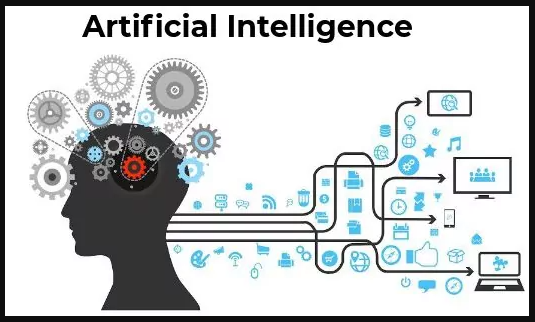The impact of AI is profound. It liberates us from mundane tasks and provides a helping hand in complex endeavors, weaving the future seamlessly into our present.
It’s an integral part of our lives, subtly influencing our experiences. Software development companies are weaving AI into the very fabric of their projects, birthing a new era of intelligent solutions.
AI has propelled software development beyond boundaries, optimizing projects, birthing assistive development tools, and swiftly dissecting colossal datasets. The result is not just software, but software imbued with excellence.
Software development is an art of driving product innovation. The Software Development Life Cycle (SDLC) unveils its complexity on grander projects, where businesses view not just for software, but for high-reliability, innovative solutions. AI steps forth as the catalyst, enabling the creation of customer-centric products.
Artificial intelligence development services transform traditional applications into intelligent marvels through techniques like Natural Language Processing (NLP) and the sub-technology Deep Learning (DL).
AI: A Developer’s Muse
Developers have embraced AI as an integral part of their practice. They wield AI’s power in coding, testing, bug detection, predictive analytics, and more.
It doesn’t just augment coding; it transforms it into an art form. Our journey into this realm led us to embed AI into our projects, an experience we’re eager to share.
Decoding AI: Unveiling Realities
AI emulates human intelligence in machines, encompassing learning, problem-solving, and perception.
There are two avatars: Weak AI, task-specific and Strong AI, mirroring human intellect. While Weak AI is a part of our daily lives, Strong AI remains a tantalizing vision.
Understanding the nuanced differences between AI, machine learning, and deep learning is crucial:
1. Artificial Intelligence: Empowers machines to emulate human behavior, including thinking, learning, and problem-solving.
2. Machine Learning: A subset of AI that self-learns and excels at specific tasks with more data.
3. Deep Learning: A subset of machine learning where artificial neural networks learn from vast data.
AI: Dispelling Myths, Unveiling Realities
AI in education industry, often shrouded in myths and science fiction, is a stalwart in various industries, with software development being a prime example.
Its merits span industries, from seamless integration into development processes to uninterrupted operation.
It empowers strategic decision-making, enhances recommendation systems, and expedites tasks, mitigating costs.
Data processing prowess sets it apart, ensuring fewer errors and fortified data integrity, particularly in quality assurance.
AI In Action: Breathing Life Into Software
Consider the task of creating a slow-motion effect in videos. The challenge arises when videos lack sufficient frames per second.
AI steps in with machine learning algorithms—a deep neural network capable of generating additional frames.
While seemingly straightforward, it demanded meticulous research, bespoke implementation, and the honing of the artificial neural network.
The result? A user can slow down a video to two, four, or eight times its original speed, each transition a testament to the seamless artistry of deep learning.
In another endeavor, we embarked on creating a dropshipping platform, guiding users through an immersive experience.
Two recommendation system algorithms took center stage, their performances elevated by the mastery of machine learning.
User interactions with products became a ballet of insights, each click a note in a symphony of preferences.
The ensuing data choreography trained the AI algorithms to seek out kindred items within the store, birthing a system that presented users with products that resonated with their inclinations.
Here, popularity met precision, and the most clickable items took their rightful place atop the virtual shelves, courtesy of the discerning algorithms.






